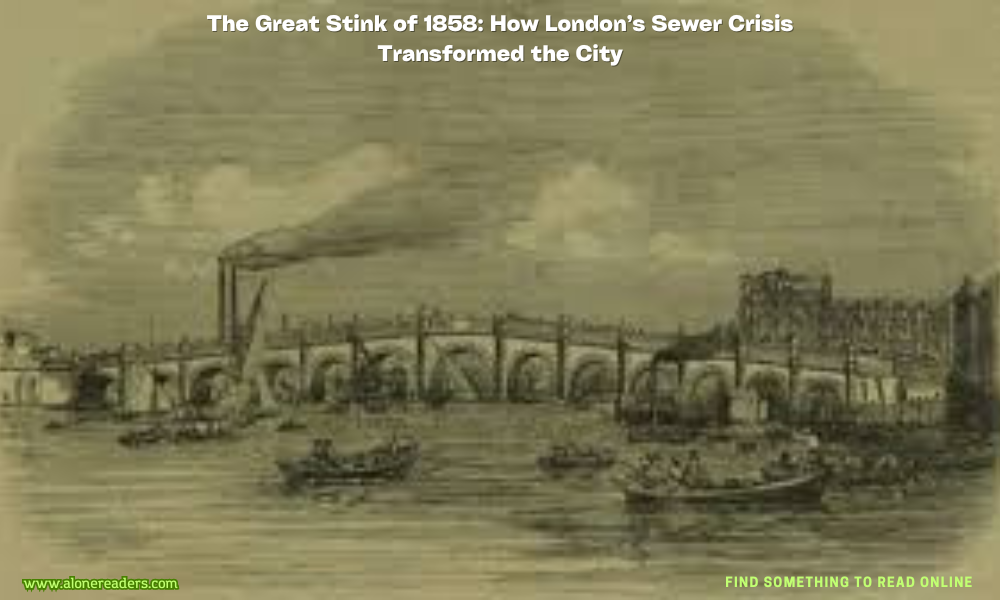
In the sweltering summer of 1858, London was enveloped by an unbearable odor that arose from its most vital waterway, the River Thames. This event, notoriously remembered as "The Great Stink," marked a critical point in the city's history, emphasizing the dire consequences of inadequate urban planning and prompting a revolutionary overhaul in sanitation management.
The mid-19th century was a period of rapid industrial growth and urbanization in London. The city's population had exploded, doubling in size from the beginning of the century, leading to increased pressure on its antiquated infrastructure. Most notably, the sewage system was grossly inadequate for the burgeoning population. Londoners relied primarily on cesspits and outdated sewer systems that eventually discharged into the Thames, the very source of their drinking water.
The problem was exacerbated by the introduction of flush toilets, which, while a mark of progress in household sanitation, overwhelmed the sewer network. The existing sewers, originally designed to drain rainwater, could not cope with the increased load of human waste. Consequently, during heavy rains, overflows would spill untreated sewage directly into the Thames. By the 1850s, nearly all of London's sewage was routinely dumped into the river, resulting in severe pollution and transforming the Thames into an open sewer.
The summer of 1858 brought with it a heatwave that raised temperatures above 30 degrees Celsius (86 degrees Fahrenheit), intensifying the stench from the river as the water level dropped and exposed the fetid silt. The smell was so overpowering that it permeated everything, disrupting daily life and even infiltrating the Houses of Parliament, which sat along the riverbank. Reports from the time describe how curtains soaked in chloride of lime were futilely hung in an attempt to block the smell, and how lawmakers struggled to conduct their business.
The public outcry reached its peak as the health implications of the polluted river became undeniable. The Thames had become a breeding ground for cholera, which had already claimed tens of thousands of lives in previous outbreaks. The miasma theory of disease—then prevalent—posited that diseases were spread by "bad air" from rotting organic matter. While we now know bacteria were the culprits, the foul air was still a significant concern.
The crisis prompted action from the city's authorities, spearheaded by Members of Parliament who were directly affected by the stench at their workplace. Engineer Joseph Bazalgette was commissioned to design a new sewer system. His proposal was ambitious: a network of underground sewers that would intercept sewage outflows and divert them eastwards, away from the city center, before they could be discharged into the Thames. This system was designed to handle sewage in a way that protected the Thames and provided for its discharge far downstream.
Construction of Bazalgette’s sewer network began in 1859 and was completed in 1865. It was an engineering marvel that required the construction of 1,300 miles of street sewers and 82 miles of intercepting sewers. The project not only included the sewers themselves but also involved the building of embankments along the Thames to house the sewers, roads, and gardens, significantly altering the landscape of central London.
Bazalgette's work effectively ended the routine contamination of the Thames and helped prevent further cholera outbreaks in London. It also set standards for modern sewage management and inspired similar infrastructure projects around the world.
The Great Stink of 1858 is more than a historical curiosity; it serves as a reminder of the critical link between urban planning and public health. London’s crisis and subsequent transformation laid the groundwork for modern sanitation and dramatically improved the quality of urban life. This event not only reshaped London physically but also highlighted the importance of proactive measures in urban planning to prevent public health crises, a lesson that remains relevant in cities worldwide today.